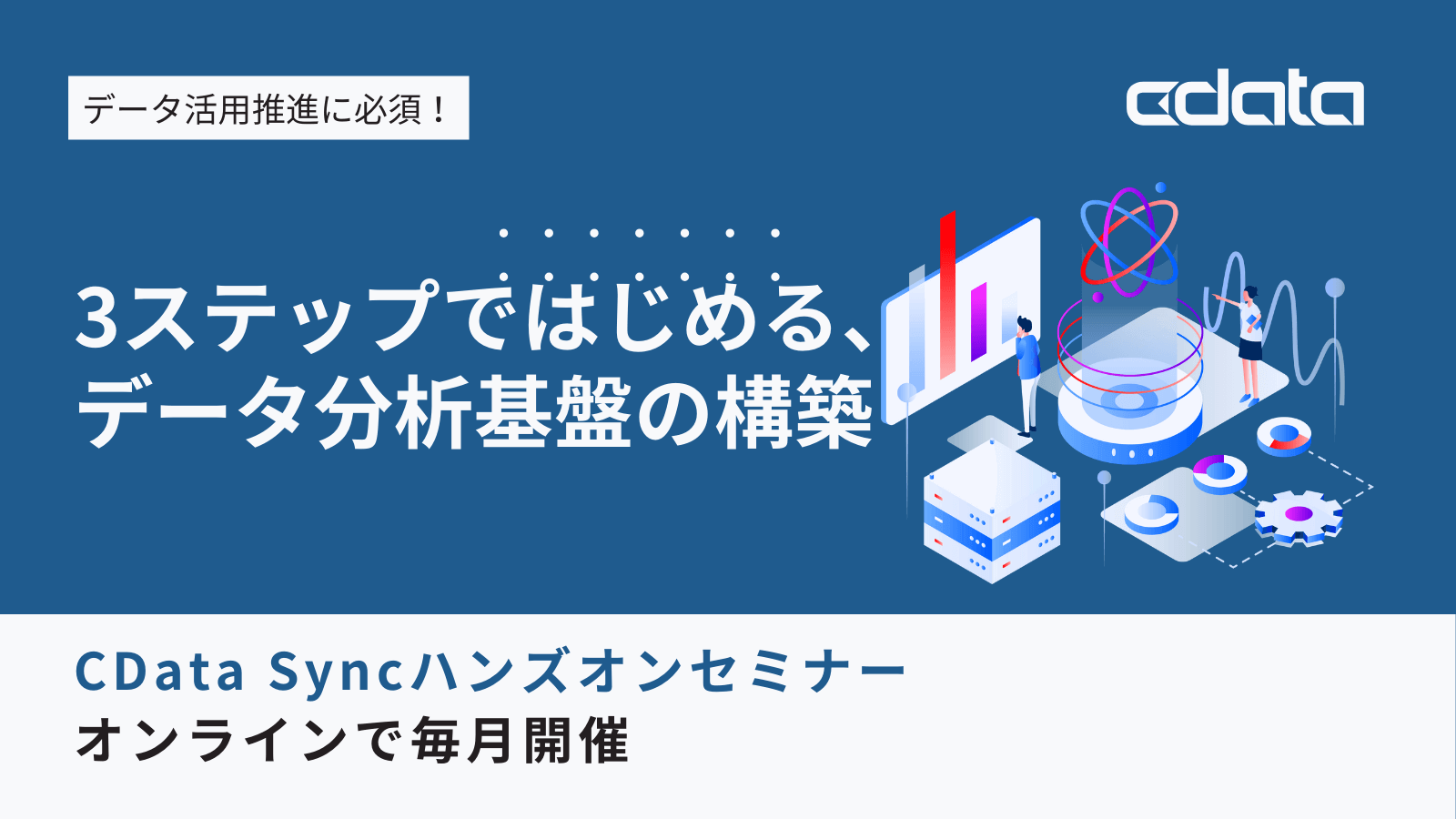ノーコードでクラウド上のデータとの連携を実現。
詳細はこちら →CData Software Japan - ナレッジベース
Latest Articles
- MySQL のデータをノーコードでREST API として公開する方法:CData API Server
- CData Sync AMI をAmazon Web Services(AWS)で起動
- Connect Cloud Guide: Derived Views, Saved Queries, and Custom Reports
- Connect Cloud Guide: SSO (Single Sign-On) and User-Defined Credentials
- Connect Cloud クイックスタート
- Shopify APIのバージョンアップに伴う弊社製品の対応について
Latest KB Entries
- DBAmp: Serial Number Expiration Date Shows 1999 or Expired
- CData Drivers のライセンスについて
- Spring4Shell に関する概要
- Update Required: HubSpot Connectivity
- CData Sync で差分更新を設定
- Apache Log4j2 Overview
ODBC Drivers
- [ article ] DBArtisan でFacebook データに連携
- [ article ] Delphi のQuickBooks データへのデータバインドコントロール
- [ article ] Visio のシェイプとe-Sales Manager データを連携
- [ article ] StiLL からCData Software ODBC Driver を使ってSuiteCRM ...
JDBC Drivers
- [ article ] JRuby からQuickBooks POS にデータ連携
- [ article ] Apache Camel を使用してGreenplum データと連携
- [ article ] Aqua Data Studio からSybase データに連携
- [ article ] ColdFusion にリアルタイムWordPress データをインポートしてアプリケーションを構築
SSIS Components
- [ article ] SSIS を使ってExact Online データをSQL Server にインポート
- [ article ] SSIS を使ってSybase データをSQL Server にインポート
- [ article ] SSIS を使ってGoogle Ad Manager データをSQL Server にインポート
- [ article ] SSIS を使ってSnowflake データをSQL Server にインポート
ADO.NET Providers
- [ article ] PayPal データを使ったCrystal Reports を発行
- [ article ] Square データをDevExpress Data Grid にデータバインドする。
- [ article ] Tableau Server でAdobe Analyticsに接続されたダッシュボードを公開
- [ article ] Visual Studio でチャートコントロールと OData をデータバインド
Excel Add-Ins
- [ article ] Mac OS X 上のMS Excel でWave Financial データを連携利用
- [ article ] StiLL からCData Software ODBC Driver を使ってActive ...
- [ article ] Mac OS X 上のMS Excel でDynamics 365 データを連携利用
- [ article ] Power View でのOracle データのインポートとビジュアライズ
API Server
- [ article ] クラウドRPA Coopel でExcel データにアクセス
- [ article ] OData データをDatabricks にロードして分析処理を行う方法:CData JDBC ...
- [ article ] Birst でOData Services のビジュアライゼーションを構築
- [ article ] TIBCO Spotfire から、ODBC 経由でOData データに連携してビジュアライズ
Data Sync
- [ article ] Amazon Redshift へのDynamics 365 Business Central ...
- [ article ] SAP HANA へのRaisers Edge NXT データのETL/ELT ...
- [ article ] KARTE Datahub からBugzilla にある顧客情報をCData Sync ...
- [ article ] SQLite へのRaisers Edge NXT データのETL/ELT ...
Windows PowerShell
- [ article ] PowerShell からDatabricks ...
- [ article ] スマレジ データをPowerShell でMySQL にレプリケーションする方法
- [ article ] e-Sales Manager データをPowerShell でMySQL ...
- [ article ] Jira データをPowerShell でMySQL にレプリケーションする方法
FireDAC Components
- [ article ] Delphi のParquet データへのデータバインドコントロール
- [ article ] Delphi のSalesloft データへのデータバインドコントロール
- [ article ] Delphi のSharePoint Excel Services ...
- [ article ] Delphi のSugar CRM データへのデータバインドコントロール





